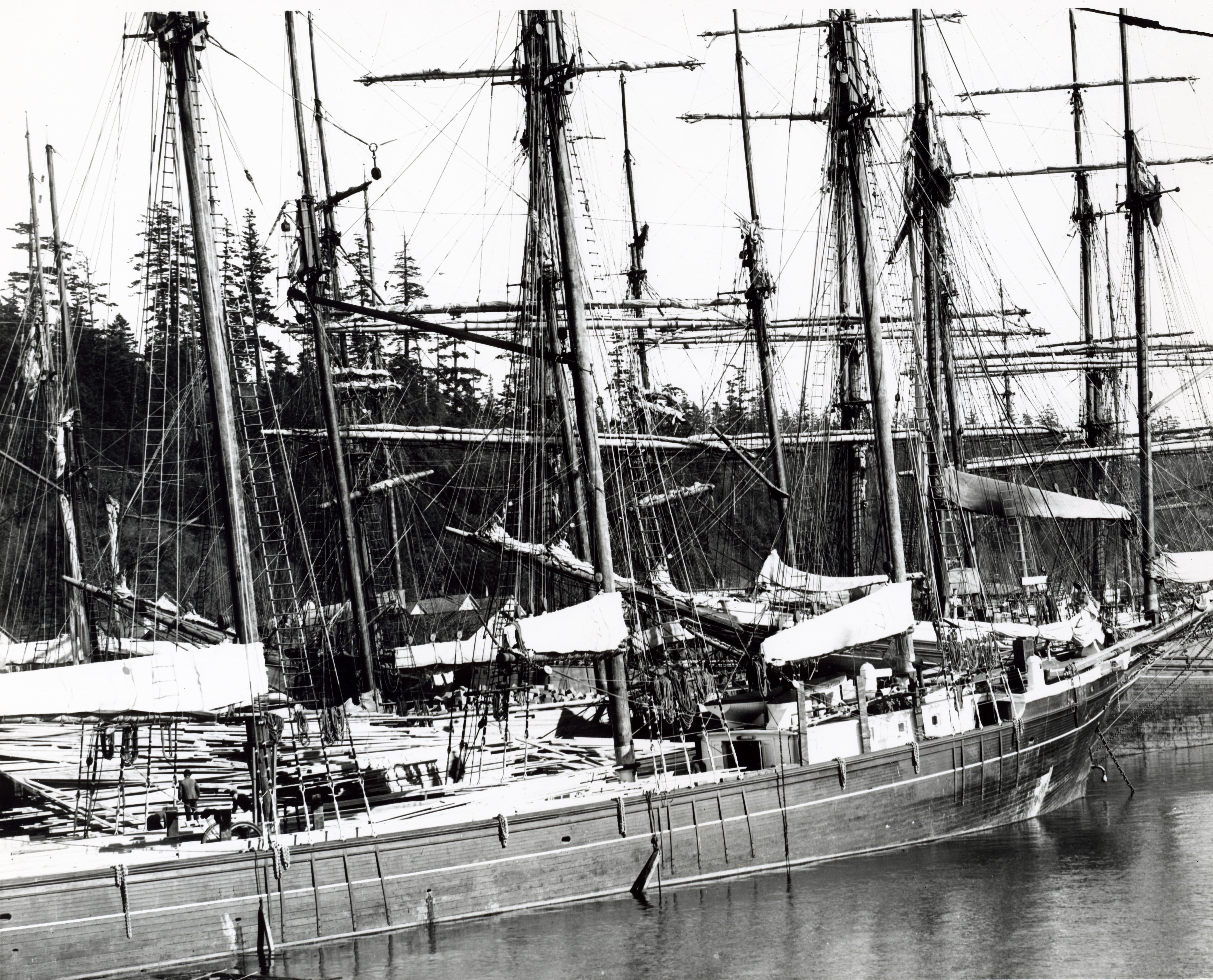FUR TRADE AND EARLY AGRICULTURE (no. 6)
Feb 17, 2011
Trade & Commerce: Fur Trade and Early Agriculture The rise and decline of the fur trade marked a tumultuous first chapter in European, Russian and Euro-American exploration of Washington’s Pacific Coast and Salish Sea and their interactions with native populations. The draw of a rich region for harvesting furs drew lasting contact through Captain Gray’s arrival in 1792 and the British Hudson Bay Company’s early 1800s trading operations. Fort Nisqually, established ca. 1833 along the Puget Sound above the Nisqually River delta started as a fort became one of the region’s significant trade and commerce centers. A diverse demographic including Native Americans, Scottish, French-Canadians, West Indians, English, and Euro-American settlers produced a variety of agricultural products in addition to the export of furs. Exports from this center until its closure in 1869 reached England, Hawaii, Europe and Asia as well as destinations along the Pacific Coast. The fort benefited from proximity to the Sound as well as the overland route south to the Columbia River.  By the 1840s, as the high demand contributed to a decline in the region’s fur bearing mammals Euro-American agricultural activities began making their first substantial inroads into the region. The Puget Sound Agricultural Company (PSAC) a subsidiary of the Hudson Bay Company created ca. 1839 to 1840 relocated settlers from Canada’s Red River Valley to the shores of the Puget Sound. With a portion of both the harvest and profits returning to the PSAC to lease the land, few sustained lasting agricultural activities. The few agricultural exports from the region via Fort Nisqually; however served to raise awareness to the potential for settlement and the underlying land-ownership stake of both the British and US governments.
By the 1840s, as the high demand contributed to a decline in the region’s fur bearing mammals Euro-American agricultural activities began making their first substantial inroads into the region. The Puget Sound Agricultural Company (PSAC) a subsidiary of the Hudson Bay Company created ca. 1839 to 1840 relocated settlers from Canada’s Red River Valley to the shores of the Puget Sound. With a portion of both the harvest and profits returning to the PSAC to lease the land, few sustained lasting agricultural activities. The few agricultural exports from the region via Fort Nisqually; however served to raise awareness to the potential for settlement and the underlying land-ownership stake of both the British and US governments. 

 By the 1840s, as the high demand contributed to a decline in the region’s fur bearing mammals Euro-American agricultural activities began making their first substantial inroads into the region. The Puget Sound Agricultural Company (PSAC) a subsidiary of the Hudson Bay Company created ca. 1839 to 1840 relocated settlers from Canada’s Red River Valley to the shores of the Puget Sound. With a portion of both the harvest and profits returning to the PSAC to lease the land, few sustained lasting agricultural activities. The few agricultural exports from the region via Fort Nisqually; however served to raise awareness to the potential for settlement and the underlying land-ownership stake of both the British and US governments.
By the 1840s, as the high demand contributed to a decline in the region’s fur bearing mammals Euro-American agricultural activities began making their first substantial inroads into the region. The Puget Sound Agricultural Company (PSAC) a subsidiary of the Hudson Bay Company created ca. 1839 to 1840 relocated settlers from Canada’s Red River Valley to the shores of the Puget Sound. With a portion of both the harvest and profits returning to the PSAC to lease the land, few sustained lasting agricultural activities. The few agricultural exports from the region via Fort Nisqually; however served to raise awareness to the potential for settlement and the underlying land-ownership stake of both the British and US governments. 
Building for Commerce
Commercial development within the Salish Sea (Sea) and along the Pacific Coast (Coast) depended upon exports with trade based economies growing as the region’s population and infrastructure improved. The 1850s to 1880s saw the beginnings of sustained Euro-American settlement along the shores of the Sound and nascent commercial activity. This period closed with the arrival of transcontinental railroad connection to Puget Sound and the territory becoming a state in 1889. The rapid growth and technological improvements of the decades from 1890s through World War I brought significant changes to maritime resources for local and Intercoastal shipping, processing, resource extraction and recreation. The ascendance of the automobile, trucking and the railroads from 1919 through World War II contributed to a change in the regional movement of goods and people with profound impacts on maritime operations. The 1950s through 1970s ushered in the rise of superports handling containerized cargo, industrial and processing facility expansion along the Sea, and the unprecedented growth of recreation activities and a growing environmental awareness.




